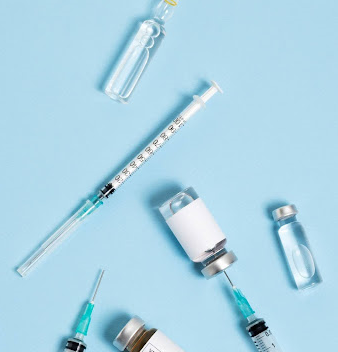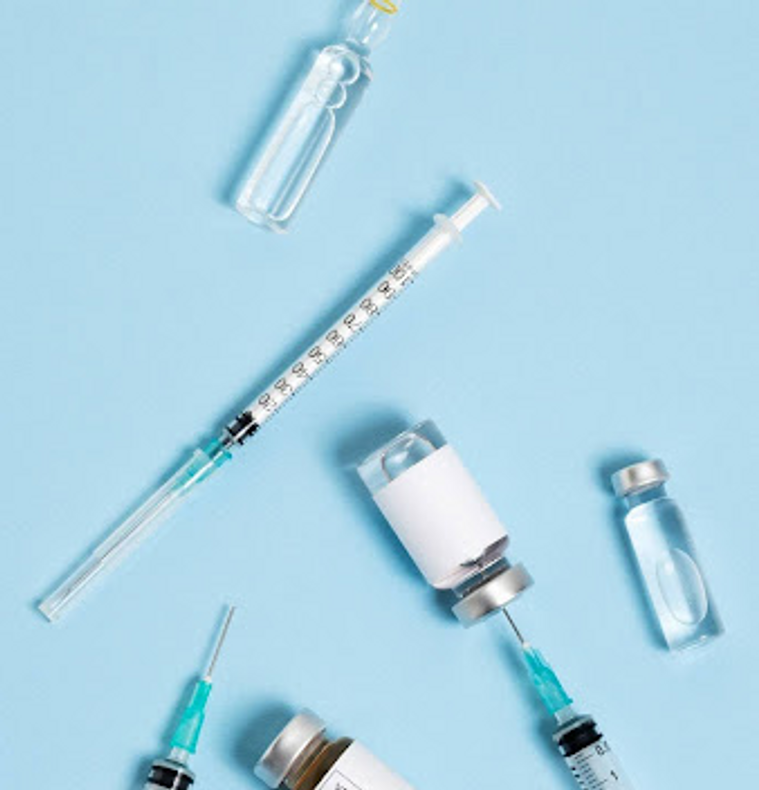5 Mistakes to Avoid When Using Insulin Syringes

Managing diabetes effectively is crucial for maintaining good health, and proper insulin syringe use plays a significant role in this process. Using insulin syringes correctly ensures that you get the right dose of insulin, which helps keep your blood sugar levels stable and under control. This can prevent serious health issues and improve your overall well-being.
We are dedicated to helping our customers use insulin syringes safely and effectively at Bulk Syringes. We provide high-quality syringes and offer guidance to ensure you can manage your diabetes with confidence and ease. Your health and safety are our top priorities. Here are five common mistakes to avoid when using insulin syringes.
Top 5 Mistakes to Avoid with Insulin Syringes
1. Reusing Syringes
Reusing insulin syringes might seem like a way to save money or reduce waste, but it can lead to several problems:
- Risk of Infection: Purchasing syringes in bulk often come with significant discounts, reducing the overall cost per unit. This can result in substantial savings, especially for medical facilities and businesses that require a large number of syringes regularly.
- Needle Dullness: Online shopping provides the convenience of comparing products, prices, and suppliers from the comfort of your home or office. You can easily find the specific type of syringe you need without the hassle of visiting multiple stores.
- Inaccurate Dosing: Online suppliers typically offer a broader range of products compared to local stores. This means you can find various types of syringes, sizes, and brands to suit your specific requirements.
What to Do Instead
To avoid these risks, always use a new, sterile syringe for each injection. Here are some tips to ensure safe and effective syringe use:
- Use a New Syringe Each Time: Make sure to use a fresh, sterile syringe for every injection to minimize the risk of infection and ensure accurate dosing.
- Proper Disposal: Dispose of used syringes safely in a sharps container to prevent accidental needle sticks and environmental contamination.
- Keep Supplies Handy: Stock up on insulin syringes so you always have enough on hand and never feel tempted to reuse one.
At Bulk Syringes, we are committed to helping you manage your diabetes safely. We provide high-quality, sterile syringes to ensure you can take each injection with confidence.
2. Incorrect Needle Disposal
Improper needle disposal can pose serious risks to both personal and public safety:
- Personal Safety: Disposing of needles in regular trash or recycling bins can lead to accidental needle sticks, which can cause injuries and infections.
- Public Safety: Incorrect disposal increases the risk of needle sticks for waste workers, sanitation staff, and others who handle trash. This can expose them to harmful infections and diseases.
- Environmental Hazards: Improperly discarded needles can contaminate the environment, posing a danger to wildlife and contributing to pollution.
What to Do Instead
To ensure safe disposal of used syringes, follow these recommendations:
- Use a Sharps Container: Always place used syringes in a puncture-proof, FDA-approved sharps container. These containers are designed to safely store needles and other sharp objects until they can be disposed of properly.
- Seal and Dispose: Once the sharps container is full, seal it securely. Follow your local guidelines for disposing of sharps containers. Many areas have designated drop-off sites, mail-back programs, or special collection events for safe disposal.
- Educate and Inform: Make sure family members and others in your household understand the importance of proper needle disposal. This helps ensure everyone’s safety and prevents accidental needle sticks.
At Bulk Syringes, we care about your safety and the safety of those around you. By using a new, sterile syringe for each injection and disposing of them properly, you can manage your diabetes effectively and contribute to a safer environment.
3. Not Rotating Injection Sites
Injecting insulin in the same spot repeatedly can lead to several problems:
- Lumps and Bumps: Continuous injections in one area can cause lumps or fatty deposits under the skin, known as lipohypertrophy. These lumps can make future injections more painful and difficult.
- Poor Insulin Absorption: Lipohypertrophy can also affect how your body absorbs insulin, leading to unpredictable blood sugar levels. This makes it harder to manage your diabetes effectively.
What to Do Instead
To avoid these issues, it's important to rotate your injection sites. Here are some tips:
- Rotate Around Your Body: Use different areas of your body for injections, such as your abdomen, thighs, and upper arms. Rotating sites help prevent lumps and ensure better insulin absorption.
- Use a Pattern: Develop a rotation pattern to avoid injecting too frequently in the same spot. For example, if you inject in your abdomen, use different quadrants and move to a new quadrant with each injection.
- Keep Track: Keep a log or use an app to track your injection sites. This can help you remember where you last injected and ensure you're rotating sites effectively.
Examples of Injection Sites
- Abdomen: The area around your belly, avoiding the area close to your belly button.
- Thighs: The front and outer sides of your thighs.
- Upper Arms: The back and outer sides of your upper arms.
By rotating your injection sites, you can reduce the risk of developing lumps and ensure that your body absorbs insulin properly.
4. Injecting Insulin Too Quickly
Injecting insulin too quickly can lead to several issues:
- Discomfort: Rapid injections can cause pain, bruising, and irritation at the injection site. This can make the injection process more unpleasant and stressful.
- Absorption Issues: Injecting too quickly can affect how insulin is absorbed by your body, potentially leading to inconsistent blood sugar levels. This can make it harder to manage your diabetes effectively.
What to Do Instead
To ensure a smooth and effective insulin injection, follow these tips:
- Inject Slowly and Steadily: Administer the insulin at a slow, steady pace. This helps reduce discomfort and ensures the insulin is absorbed properly.
- Relax Your Muscles: Try to relax the muscles around the injection site. Tense muscles can make the injection more painful and affect absorption.
- Use the Correct Technique: Pinch a small amount of skin and insert the needle at a 90-degree angle (or 45 degrees if you're thin or using a shorter needle). Push the plunger down slowly and steadily, then wait a few seconds before withdrawing the needle.
- Warm the Insulin: If the insulin is too cold, it can cause discomfort. Allow the insulin to reach room temperature before injecting it. You can do this by holding the syringe in your hands for a few minutes.
By injecting insulin slowly and steadily, you can minimize discomfort and ensure your body absorbs the insulin effectively.
5. Not Storing Insulin Properly
Storing insulin incorrectly can lead to several problems:
- Decreased Effectiveness: Insulin that is not stored properly can lose its potency, making it less effective at controlling blood sugar levels. This can result in poor diabetes management and increased health risks.
- Spoilage: Exposure to extreme temperatures can cause insulin to spoil, rendering it unusable and potentially harmful if injected.
What to Do Instead
To ensure your insulin remains effective, follow these storage guidelines:
- Refrigerate Unopened Insulin: Store unopened insulin in the refrigerator at a temperature between 36°F and 46°F (2°C to 8°C). Avoid placing it in the freezer, as freezing can damage the insulin.
- Room Temperature for In-Use Insulin: Once you start using a vial or pen, you can keep it at room temperature (between 59°F and 86°F or 15°C and 30°C) for up to 28 days. This makes it more comfortable for injections and avoids the discomfort of injecting cold insulin.
- Avoid Extreme Temperatures: Do not expose insulin to extreme heat or cold. Keep it away from direct sunlight, hot cars, or freezing temperatures. Insulin that has been exposed to such conditions should be discarded.
- Check Expiration Dates: Always check the expiration date on your insulin before use. Expired insulin may not work effectively and should be replaced.
By following these storage guidelines, you can ensure that your insulin remains potent and effective, helping you manage your diabetes properly.
By avoiding these common mistakes, you can ensure that your insulin works effectively, helping you maintain stable blood sugar levels and better overall health.
At Bulk Syringes, we are committed to supporting your diabetes management with high-quality insulin syringes and supplies. Trust us for your needs and take the first step towards safer and more effective diabetes care.
Order Insulin Syringes Now!
Ready to ensure safe and effective insulin administration? Buy insulin syringes in bulk from Bulk Syringes today and save! Our high-quality syringes are perfect for managing your insulin needs. Don't compromise on safety and convenience—order now!

